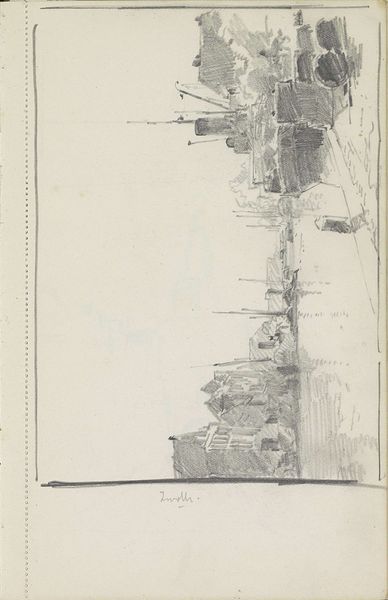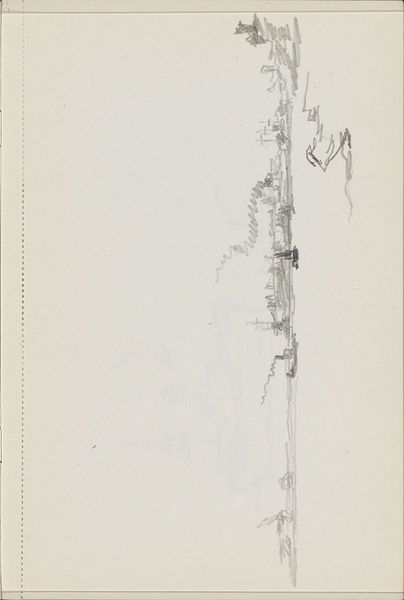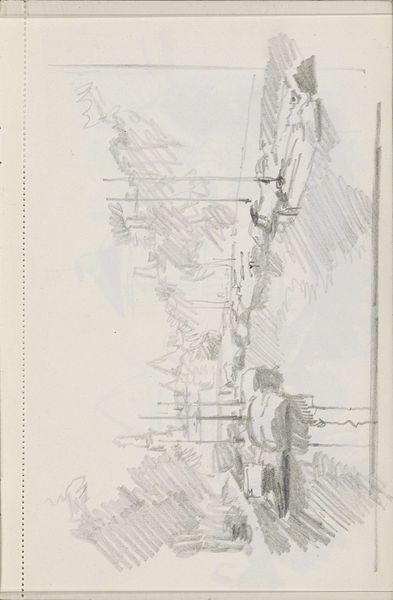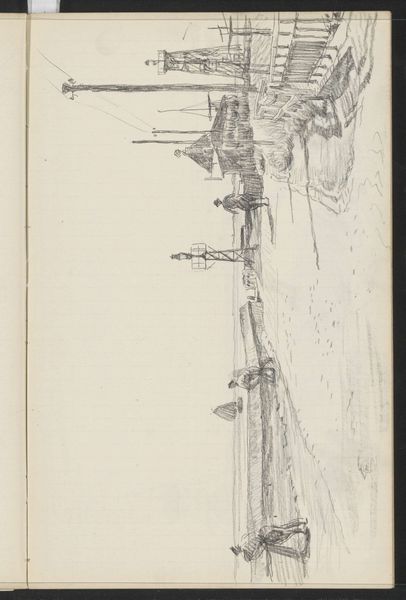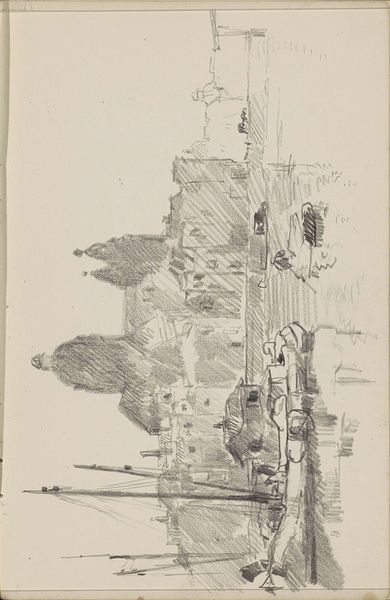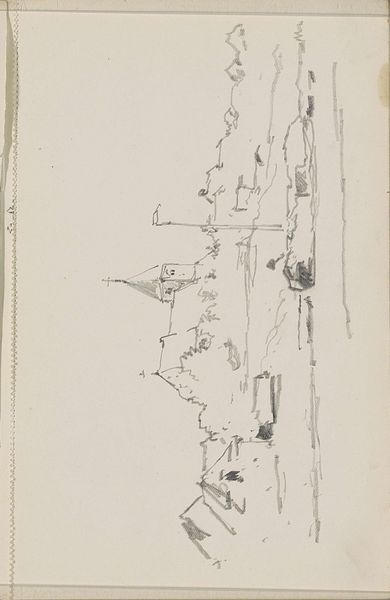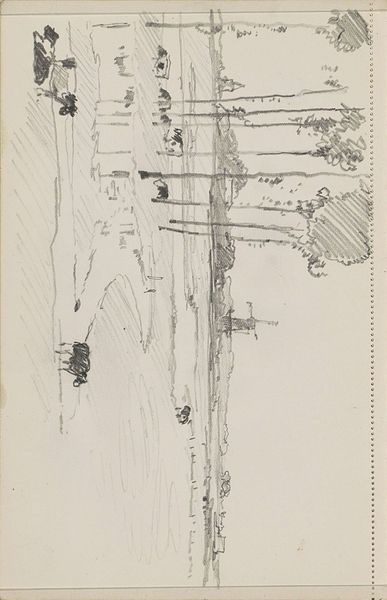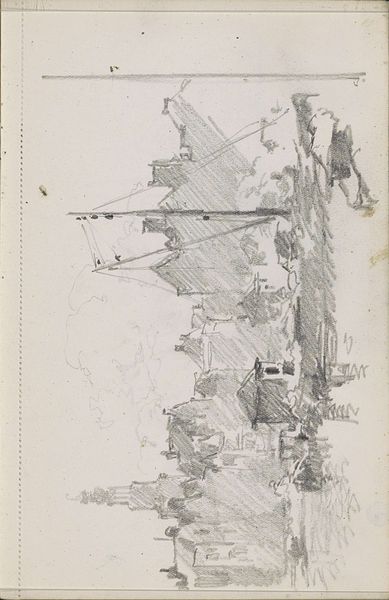
drawing, paper, pencil
#
drawing
#
landscape
#
paper
#
geometric
#
pencil
Copyright: Rijks Museum: Open Domain
Editor: We are looking at "View of a Seaside Village" from around 1936, a pencil drawing on paper by Cornelis Vreedenburgh, currently residing at the Rijksmuseum. It's a rather skeletal rendition, almost ghostly. What formal qualities stand out to you? Curator: The work compels primarily due to its structural simplicity. The stark verticality, emphasized by the juxtaposition of the architectural rendering with the linear depiction of, perhaps, light reflecting off of water, creates an intriguing planar relationship. Note how the geometric forms of the village contrast with the implied movement of the sea, generating a dynamic tension within the ostensibly still scene. Editor: I see what you mean. The lines create a sort of controlled chaos. It seems like a study in contrasts. Does the restricted palette – just the graphite – play a role here? Curator: Precisely. The monochrome reinforces the emphasis on form and texture. Observe how Vreedenburgh uses varying pressure to create depth and shadow, thereby articulating volume within a seemingly flat space. Consider also how the limitations of the medium serve to highlight the essence of the subject – reducing the village and sea to their basic geometric components. How might this influence your reading? Editor: It makes me think about the artist's process – stripping down the scene to its essentials to understand its structure. Perhaps to find the underlying order in something seemingly chaotic. Curator: A cogent observation. The work operates not as a literal representation but rather as a formal investigation, urging us to perceive the inherent structure of our visual environment. Editor: This has really given me a different way to approach drawings; I typically focus on color. Curator: And I see the work anew by your considerations for the role of artistic intent.
Comments
No comments
Be the first to comment and join the conversation on the ultimate creative platform.

